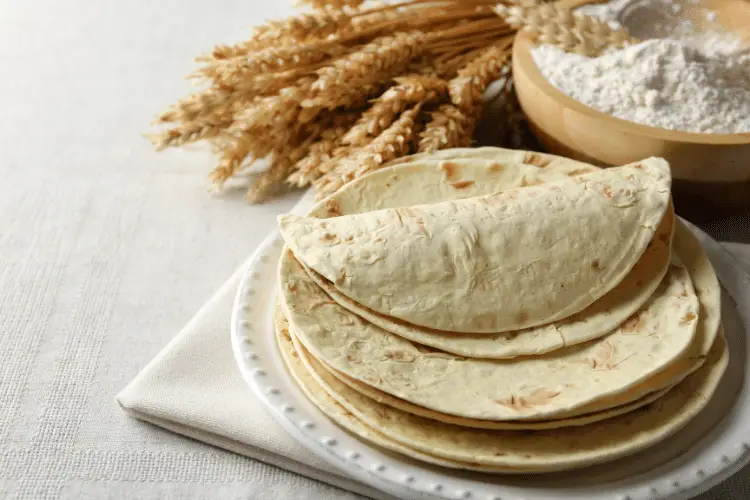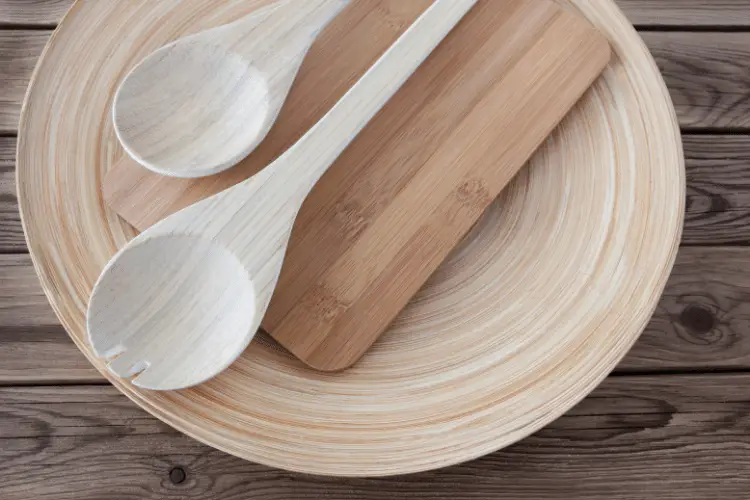For many years, plastics have been widely used in manufacturing almost everything, from pins to cups to plates and even building materials.
Unfortunately, recent research and developments in environmental science have led us to conclude that plastic is bad for Earth.
So terrible that continuing to use plastic could spell our doom unless we find a sustainable alternative.
Bamboo, wheat straw, and other plant-based materials are some of the few alternatives to plastic available today.
Many people are looking for ways to reduce their negative environmental footprint, and one way to do this is to switch to more sustainable products. This is where wheat straw and Bamboo come in.
This post will compare and contrast wheat straw and bamboo plates.
Background On Wheat Straw Plates
After the grains have been removed, wheat straw plates are made from the leftover from a wheat harvest.

Wheat straw plates are becoming more popular as an alternative to plastic and other dishware.
After the grains have been removed, wheat straw is left over from the wheat harvest. This has been seen as a waste for as long as anyone can remember.
Farmers typically burn it, which contributes to unhealthy air quality and can harm health. These stalks, however, are not without value. Products made from wheat straw are made from the leftover material.
Wheat straw has a cellulose compound called lignin that can be mixed with other safe ingredients like sugar to make an alternative to plastic.
Manufacturers can also make pulp from wheat waste that hasn’t been mixed with anything else. The pulp can be shaped into many different things, like plates, cups, and containers for storing food.
One would wonder if the use of wheat straw plates impacts our environment. The answer is yes.
Wheat straws take less energy to turn into a pulp because they are natural and don’t need as much work.
They need less harmful substances, like oil, because the natural fibers make the material strong enough. It also saves our forests because wheat straws can be used to make paper.
Lastly, it’s a good way for farmers to make money because they sell the waste for a reasonable price.
It also reduces the amount of trash that needs to be thrown away, which is usually done by burning the trash, which contributes to air pollution.
Background On Bamboo Plates
Bamboo plates are made from fully matured bamboo trees. Bamboo is the most common plant in Asia but can also be seen in parts of Africa and South America.

Bamboo is one of the plants that grow the fastest. It has hollow stems that can reach heights of over 60 feet.
It is an essential part of many ecosystems because it gives animals food and a place to live. It is also an important material for people living in developing countries.
Bamboo plates help protect our environment because of the nature of the plant. Bamboo makes more oxygen and biomass than a forest of the same size.
As a result, it cuts down on carbon dioxide and grows back on its own, so there’s no need to replant. Bamboo can also fix and clean up soil that has been damaged or polluted.
Comparison Of Wheat Straw and Bamboo Plates
Bamboo and wheat straws are both eco-friendly, but when trying to figure out which product would be better for you, it’s important to compare them based on certain criteria.
These criteria are durability and strength, environmental impact and sustainability, and cost and availability.
We will look at them one after the other :
1. Durability and Strength
Wheat straw bio-plastics, like regular plastics, are incredibly durable, so they’re great for reusable water bottles and coffee mugs. Bamboo plates are durable but can not withstand heat and shouldn’t be used in a microwave.
2. Environmental Impact and Sustainability
Both bamboo and wheat straw plates are eco-friendly and protect our environment.
Bamboo produces more oxygen for our environment. When cut, it does not need to be replanted as it grows back on its own. At the same time, wheat straw converts the amount of trash that should be burnt into useful materials.
3. Cost and Availability
Wheat straw plates and bamboo plates are pretty expensive. This is because plastics made from plants are expensive.
Bamboo plates are widely available due to how fast the bamboo plant grows. Unlike wheat straw, it is still new, and the wheat grains need to be harvested before they can be used.
Advantages and Disadvantages Of Using Wheat Straw Plates
Wheat straw plates are safer for the environment than plastic plates. However, if you throw these plates, they might break apart quickly.
Here are some more advantages and disadvantages of wheat straw plates.
Advantages Of Using Wheat Straw Plates
- Renewable
Bioplastics can be produced and naturally renewed using biological material. Hence, they are sustainable.
- Biodegradable
Unlike most plastic plates, the ones made from wheat straw are biodegradable because they are made from organic and natural materials.
So when you’re done with them, you don’t have to feel bad about throwing them away and adding to pollution because they’re completely biodegradable and don’t hurt or hurt the environment in any way.
- Lightweight
The plates made of wheat straw are light and easy for children to hold. There’s no need to worry about kids dropping their plates and breaking them.
Small children should have these dishes because they aren’t too heavy and are easy for them to move around.
Your child can easily pick up a cup or bowl and won’t drop anything because of its weight.
Let’s see the disadvantages of using wheat straw plates.
Disadvantages of wheat straw plates.
- Less Durable
Wheat straw plates are less durable than Bamboo. Most biodegradable wheat straw plates are only made to last a few months.
- Not widely available
Wheat straw is a new bio-plastic, which is why it is not widely available. It can only be gotten when the wheat grains have been harvested.
Having seen the advantages and disadvantages of wheat straw plates, let’s see the advantages and disadvantages of bamboo plates in the next section.
Advantages and Disadvantages of Using Bamboo Plates
Using bamboo plates has a lot of benefits. Here are a few reasons why using bamboo plates is a good idea.
Advantages of Using Bamboo Plates
- Renewable
Because Bamboo grows quickly and can grow back, it is one of the most renewable resources on Earth.
Unlike hardwood trees, a bamboo plant will keep producing for many years without failing or needing to be replanted.
- Widely Available
Bamboo is a fast-growing plant in the world. Its ability to grow independently in a few months makes it widely available.
- Durability
Even though the plates are made from organic materials, their durability and shelf life are not affected in any way.
All thanks to the natural fibers that are used, making them as durable as regular plastic and strong enough to use daily.
Disadvantages Of Bamboo Plates
- It cannot be used in a microwave.
The plate made from Bamboo is made of natural fibers that can not withstand the heat of being used in a microwave.
- Wheat Straw may be more biodegradable.
They can be turned into compost, but they need to be taken to a place where composting is done on a large scale.
They won’t break down fast in a home compost pile. It can take 45 days for Bamboo to break down entirely in a composting facility. It is not as biodegradable as wheat straw.
- Can be heavy
As much as a bamboo plate is lightweight, the weight tends to become heavy when you carry it in large quantities at a time.
Conclusion Which is better for tableware, wheat straw or Bamboo?
After learning about bamboo and wheat straw plates, it’s clear that each type has its own pros and cons.
But a wheat straw could be a better choice if you want to be more environmentally friendly. But for durability, a plate made of Bamboo is a better choice.

